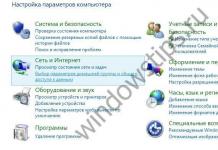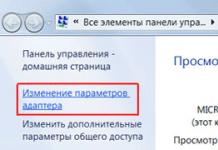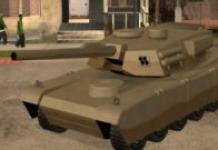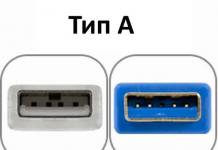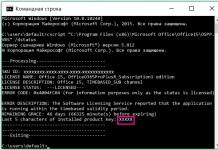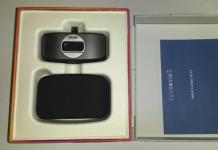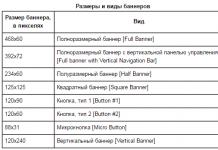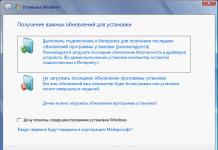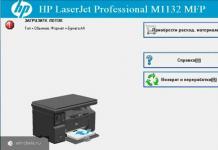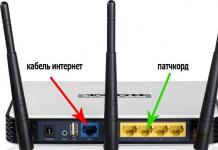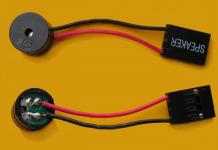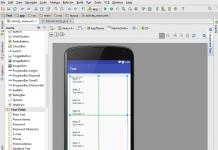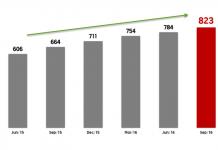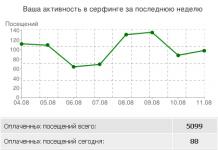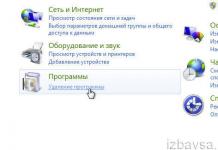If the USB ports on your PC are not working, and Windows settings and driver updates do not help, the controller may have been disabled in the BIOS. In this case, you will need to go to the configuration menu and turn everything back on.
There are many different versions BIOS with its own interfaces and subtleties of operation. Also, a more modern complex can work on your computer - UEFI, which supports a full GUI interface. This article discusses the distributions that are most often installed on motherboards.
Entering BIOS settings
To start changing the configuration, you need to go to the corresponding menu. It can be opened when the personal computer is turned on - before Windows starts loading from the hard drive.
Turn on your PC. In case it is already running: reboot. Wait for the speaker to beep: a short, single beep indicates that all internal components necessary for the computer to function have been detected.
Now you need to click hotkey to call the configuration. This must be done before changing the screen. If you don't have time and Windows starts loading, reboot. The keys depend on the model of the installed motherboard and the BIOS firmware version. You can find it in the user manual that came with the motherboard, on the manufacturer’s official website, or view on your PC screen when loading it:

If you don't know the board model, it's okay. Just try pressing the following keys: Tab, Delete, Esc, F1, F2, F8, F10, F11, F12. One of them will definitely do.
You don't have to try just 1 option at a time. You can quickly press all the buttons from the list without any problems. One of them will come up and launch the BIOS settings, and the rest will be ignored.
Entering the BIOS/UEFI settings of the latest PCs
Many modern computers boot up so quickly that you won't be able to access the keystrokes when you turn them on. This is also true for laptops. Therefore, the latest versions of Windows OS have acquired a new launch feature. Let's show it using Windows 8.1 as an example.


Your computer or laptop will reboot into setup mode. After restarting your PC, you will also be able to select option to run from a USB drive or DVD.
Menu navigation
Almost all BIOS versions do not have a graphical interface. This means that you will have to work only using the keyboard, like in the Windows console. Navigation is carried out using the up-down and right-left arrows. To open any section, use the Enter key to go back - “Escape”. A small reminder of the keys used is always shown on the screen.

Firmware complex UEFI installed on the most expensive and powerful motherboards. It supports more drivers and can use a mouse. Its interface will be familiar to users of Windows and other modern operating systems.

Each version has its own interface and sets of options. Even the names of the same parameters may differ. The following article describes several popular BIOS releases.
AMI BIOS
A very common option that can be found on many modern computers. The main menu is divided into 2 parts: a list of categories and various actions, such as exit or save. You will be working on the left side.

You need to go to the section called “ Integrated Peripherals" There is no Russian version of the interface, so all commands are only in English. Use the Down arrow to highlight this item and press Enter.
Here you need to enable ( Enabled) 4 options:
- USB EHCI controller– main controller. If the motherboard has version 3.0 ports, this item will be divided into 2 parts: “Controller” and “Controller 2.0”;
- USB Keyboard Support– keyboard support;
- USB Mouse Support– mouse support;
- – work with external data storage: flash drives, disk drives, smartphones and digital cameras.

In some older versions there are only 2 points " USB controller" And " Legacy USB storage support».
When you're done with the settings, press the F10 key to save your changes and restart your computer.
Phoenix AwardBIOS
Another popular version that can often be found on modern laptops. It does not have a main page like AMI, but is equipped with convenient thematic bookmarks at the top. You can move between sections using the left and right arrows, and between items using the up and down arrows.

Go to the section " Advanced» using the Right arrow. In it, find the category “ USB configuration" All items in this section must be moved to the position “ Enabled" In some versions the category " USB configuration" may be located in the " tab Peripherals" and not in "Advanced".
To exit the menu, press F10 and confirm exit.

AMI BIOS for Asus
Version of AMI used on Asus laptops. Externally it is very similar to Phoenix - a similar bookmarks bar. Settings USB are in the section " Advanced" Go there, enable all options and exit using the F10 button.
UEFI
Contrary to popular belief, UEFI is not part of the BIOS. It can rather be called a more advanced, but less popular competitor. There are a large number of different versions, each with their own interfaces. However, here the controls are similar to the usual Windows, so you can easily find the options you need.

Windows Settings
If at the BIOS level all ports and controllers are enabled, but the USB ports still do not work, there may be a problem in the settings of your Windows system.
First, just try disconnect and reconnect the device. This will check if the drivers are correct. If there's something wrong with them, Windows will try to reinstall them.
If nothing happens when you reconnect, try turn on the controller in the Windows registry. To do this you need to do the following:

Video: how to configure any BIOS to boot from a USB flash drive
The reasons for problems due to which USB ports on a laptop do not work can be completely different - from hardware failure to “lost” motherboard drivers or the controllers themselves.
However, usually the user can cope with most problems on his own, without turning to specialists - if he knows how to do it.
If there are a lot of USB ports on the laptop (for example, 3 or 4), the problem may not be so critical, and its solution can be postponed.
But if there are only 2 connectors or there is a constant need to use connected devices - flash drives, and even printers - the issue should be resolved as soon as possible.
Moreover, some methods will take no more than a few minutes.
First Troubleshooting Steps
A message that appears on the screen about the USB ports stopping working or the laptop not responding to a drive installed in the corresponding slot may indicate.
Sometimes you can solve them with a simple reboot - there is a small chance that the fix will happen automatically.
Increase the likelihood of the positive effect of a reboot, which actually sometimes helps, You can do it in a not quite usual way:
1 Completely disconnect the laptop from the power supply (if it was, for example, charging);
2 Remove the battery and leave the laptop in this state for about 5 minutes;
3 Insert the battery back and turn on the device.
If no messages about non-working ports appear on the screen, but the flash drive is still not readable or a peripheral device cannot be connected to the laptop, it is possible that the problem lies with this equipment.
The assumption is tested by connecting gadgets to other ports of the laptop - or to another computer.
Other USB devices
Another problematic situation with USB ports arises when a large number of external devices are simultaneously connected to the laptop.
For example, a user has already connected three gadgets to four ports ( , and ), and then tries to install a flash drive as well.
Sometimes such a drive simply will not be detected by the system - and turning off 1-2 peripheral devices allows you to check the assumption.

Simultaneously connect a large number of USB devices and adapters to the laptop.
Most often, this situation occurs not when connecting peripherals directly to the laptop, but when using a “hub” (USB hub that increases the number of connections).
You can solve the problem by reducing the number of connected devices - or even better, by removing the hub and connecting all gadgets directly.
Incorrect BIOS configuration
You can find a list of ways to solve problems with USB ports.
Sometimes using this interface it is possible to enable self-disabling controllers on the motherboard.
To activate, you need to perform several steps:
- Reboot the system while simultaneously pressing the function keys to enter the BIOS (for some laptops this is F1 or F2, for others - Del or Esc).
- Select the Advanced or Integrated Peripherals section.
- Go to the USB Configuration menu item and change the parameter value in the USB Controller section (there may be several of them with different names) to Enabled.

BIOS interface settings.
After a reboot, the hardware configuration on the laptop will change, and USB ports that were not previously recognized by the system may appear to be working.
System settings
A laptop running on battery power can automatically turn off some controllers to save energy - especially if it approaches critical values.
In this situation, first of all, you should connect the laptop to the network, and then change the power settings, by following these steps:
1 Open Device Manager.
2 Select the branch indicating serial bus controllers.
3 Find and open the USB root hub subkey.
4 Double-click the properties of the hub and go to the power settings.
If the problem was incorrect power consumption settings that caused the laptop to automatically turn off the ports, there will be a check mark here to allow the hub to turn off power.
By removing it, you can restore the functionality of the ports.
The steps are repeated for each hub if there are several of them on the laptop.

Prohibits the system from turning off USB ports to save energy.
Driver problem
The problem may be - and in most cases it is - in problems with USB drivers.
You can find the problem by going to Device Manager(via computer properties or by typing in mmc devmgmt.msc).
It is possible that one of the ports is marked in the list with a special icon - a yellow triangle with an exclamation point, indicating that the equipment is not working properly.
You can try the problem solve in one of 2 ways:
- Try updating the drivers (preferably an Internet connection) in the properties of the USB controller.
- Remove the device marked with a yellow triangle from Dispatcher And restart laptop.
When using the second option, the system rebooted will try to install new software for discovered “new” equipment. Sometimes this will restore port operation.
For the first option, you may need to find out the ID number by which the corresponding driver is searched on the Internet - this identifier is located in the device properties on the details tab.

Determining USB port ID.
The problem, which is the motherboard drivers not working properly (this usually happens with outdated laptops released several years ago), is solved by downloading and installing the appropriate software.
To do this, the laptop user first needs to find out - for example, use the AIDA64 application, which is paid, but works without entering a key confirming payment for a certain trial period.
The name of the device will help you identify and msinfo32 command, entered in the “Run” form (called by the Win + R keys).

Determining the name of the motherboard.
You can try to find drivers for the corresponding board on the website of its manufacturer - or on the resource of the company that developed the chipset.
You should know: If you don’t have the time and experience to find and update drivers, you can use the DriverPack Solution utility. After installation on the laptop, it will independently check and update all the necessary software. The disadvantage of using this method is that if you do not choose to manually configure updates, the application will automatically replace drivers for almost every part and even update some programs - this usually takes several hours.

A utility for searching and updating control programs and other applications.
Incorrect operation of the operating system
Replacing this part returns the port (or several connectors at once) to its normal state.
In order to encounter such problems as rarely as possible, the user should not connect a large number of USB devices to the laptop - especially using special splitters (“hubs”).
It is also worth enabling automatic installation of updates in the appropriate section of Windows - this usually allows the system to independently resolve problems with drivers.
Problems with non-functioning USB ports are not that uncommon. And considering that half of modern peripheral equipment is connected through this connector, this is practically a disaster for the user.
However, it is worth initially understanding that non-functioning connectors on a computer or non-functioning USB outputs on a laptop are two distinct problems that can be solved in different ways.
Simple solutions to the problem of broken ports
All equipment works by interacting with the operating system through the corresponding algorithm - the driver. It is possible that the slots do not function precisely because of malfunctions in the operation of these programs. How can I try to fix the problem?
- Reboot your computer. Most often there is no reason to panic. A program failure can be resolved by simply restarting the computer. If there are no problems loading drivers, restarting the system will improve functioning.
- Update USB connector configurations in Device Manager. Nothing complicated, you need to click “My Computer”, then “Manage” (or enter the command devmgmt.msc in “Start”). In the window that appears, click on the list of devices and select the action item at the top, and then “update hardware configuration.” After that, check whether the inscription “USB controllers” appears in the list of equipment; if it is found, the issue can be considered closed.
It is also quite common to experience problems with the functionality of ports after updating software on Windows 10. If this is the case, it is worth double-checking whether all updates from the developers have been installed.
Determining the causes of computer failure and solutions
If a malfunction occurs in the USB connectors on your computer, you need to take a number of actions and establish the causes of the problem in order to know exactly how to resolve this situation.
- The computer system unit has universal buses at the front of the panel and at the rear. If the connectors in front fail, the most likely cause is a mechanical failure.
- Another possible secret to USB failure may be an incorrect connection of the USB unit to the motherboard. For this, 4 wires are used (2 power and 2 signal). It’s worth checking them, perhaps the poles on the power supply are reversed, and the signal signals are installed out of sequence.
In such a situation, you should check the functionality of the connectors by connecting a working memory card (flash drive) to the ports located on the back of the system unit. It is prohibited to install functional equipment into the front outputs, since if the polarity is reversed, the flash drive will burn out! If the rear USB slots work, but the front ones do not, the diagnosis is a broken contact on the front panel of the connectors, or the output itself is broken, or the port block is inconsistently connected to the motherboard.
To clarify, it is worth disconnecting the system unit from the power supply and removing the protective covers from it. You need to compare the diagram of the correct serial connection with the situation on the computer. 
Attention!
– Connection sequence diagrams may vary depending on the motherboard.
– There is a so-called reverse connection, horizontal and vertical.
– When inspecting, you need to focus on the colors of the contacts and block, as well as the relationship between their color and the location of the metal pins.
- If, after examining the correct connection, no violations are found, then it is worth taking a look at the slots themselves. They are painted black or blue. In the latter option, if the memory card does not work in it, then the cause of the malfunction may be hidden in the following:
Blue color indicates USB output version 3.0. For all its advantages (power, speed), it has one drawback - after reinstalling the software, you need to install drivers for its normal functioning. Or “tear down” the old ones and reinstall them again. You can find out exactly by connecting a flash drive to the black connector. If it works, then the reason is in the driver for the USB 3.0 port and it is best in this case to download the software from the manufacturer’s website. Or, as a last resort, do this using the program included with the motherboard.
- It is also possible that both ports “do not see” the installed equipment. In this case, the reason is hidden in the failure of the controller. The solution is to purchase additional equipment, or rather a USB2.0-PCI or USB3.0-Mini PCIe expansion card. Repairing the controller specifically is not economically feasible.
USB2.0 and USB3.0 boards differ in price and functionality. In the first version 2.0 they are cheaper, but the operating speed of the device is lower. The main problem is that the device fits system units of older models, and it is not always possible to mount them in new equipment that has a MicroATX motherboard.
But version 3.0 is more powerful, faster, but also more expensive. However, the equipment cannot be installed in old system units.
This is the main work to identify and troubleshoot problems in a block of USB ports on a desktop computer.
Troubleshooting laptop problems
Diagnosing problems on a laptop is as simple as on a computer, but repairs require experience and special knowledge.
If the USB ports on a laptop malfunction, it is best to start diagnosing the causes after reinstalling the Windows system again, especially if it is version 10. The whole reason may be incomplete installation of drivers.

So, you can identify the cause by checking the black and blue slots. The sequence is the same as for a desktop computer. We insert the external media into the blue and black ports alternately. If USB 3.0 (blue) is not working and 2.0 (black) is functioning, we conclude that it is necessary to install or reinstall the driver.
In a situation where software solutions did not fix the problem, there is still a chance that the hardware is disabled in Bios. You need to try turning it on.
The algorithm is as follows: reboot the laptop and when it starts, press the F-2 or F-12 key. Bios opens. The next steps are approximately the following:
- At the top we find the Advanced item. And in the open list (usually at the end) – USB Configuration. Press Enter and go to the section.
- We find the USB Function item and set it opposite it.

Bios may differ on different models, but the principle of operation is similar.
However, if this does not help, then most likely the reasons are hidden in mechanical breakdowns or short circuits in the equipment. Then the only option is a service center, where they will either replace the faulty elements or repair them.
There are different types of malfunctions associated with the operation of the front USB ports on a personal computer. Sometimes a problem occurs when all the front ports do not function. In other cases, when only one does not work or works poorly. We will try to talk about each of the situations when USB ports do not work.
Simultaneous failure of all front ports
First, it is necessary to clarify that the front ports differ from the rear ones in that they are connected to the “motherboard” through a special cable, while the latter are part of the motherboard.
The first probable reason why the USB ports on the front panel of the computer often do not work is that the USB port controller is disabled. It is located on the motherboard. You can enable it using the BIOS menu. You can get here by restarting your computer and pressing one of the keys. This is usually the F2 or Delete key.
In the BIOS you will need to go to the Integrated Peripherals section. There is a USB Configuration menu here. You need to find out what position the USBController is in. If it says Disabled next to it, it means the controller is not working. Switch to the Enabled position. Save the changes and restart the computer.
You can check all USB ports by going to Device Manager. It contains the “USB Serial Bus Controllers” section. Some of the items may be marked with a yellow exclamation mark. Why? This indicates a malfunction or poor performance of one of the ports. Detailed information is available in the context menu, which can be called up by right-clicking on the device name. It is worth deleting all controllers in the “Manager” and then restarting the computer. Windows OS is capable of restoring all controllers at boot time on its own.
The Windows operating system sometimes disables one or all front ports specifically to save power. We can control the power supply ourselves, so our task at this stage is to prevent the system from doing this. We will again need the “Device Manager” and the “Universal USB Bus Controller”. Next, click on the line “USB Root Hub” with the left button. Here we go to the “Power Management” menu. Uncheck the “Allow shutdown to save energy” checkbox. We do this procedure with each USB.
There is another reason why they do not work, it lies in failures or incorrect operation of the Windows system. Most often this happens if constant updates are disabled on the operating system. It is highly advisable to restore lost system files or reinstall Windows completely. Problems with the front ports arise due to incorrect OS assembly. Therefore, it is important to use only proven Windows builds.
What to do if only one front USB input does not work
One possible reason why this happens is that the cable connecting the front ports to the motherboard is faulty. Then the problem with the operation of one of the ports is solved by replacing this cable yourself or with the help of specialists.
A malfunction may occur if we connect several devices to the front USB ports, for example, an external drive and a phone at once or something else. There may not be enough electricity for one of them. This situation leads to both port shutdown and intermittent operation. This happens because the front port interface may not have an additional power source, that is, an adapter. Sometimes we don't notice that the front USB ports are faulty. Problems arise only when the main adapter is not sufficient for our immediate needs. And they can be solved by purchasing a USB hub with an additional power source. After replacement, we are able to connect any peripheral devices.
Before starting any of the operations listed in the article to correct deficiencies, you need to check the contacts connecting the cable to the motherboard. A lot of problems with front USB ports can be solved this way.
USB technology is one of the most important of the many technologies that have made a huge impact in the computer world. USB (Universal Serial Bus- “universal serial bus”) - a serial data transfer interface for low- and medium-speed computer peripheral devices
This technology has made it truly easy and convenient to work with printers, scanners and external storage devices (external hard drives, USB flash drives). All actions with installing USB devices came down to a simple principle: “ Plug and play" Devices have become truly mobile precisely because of USB technology. Today, not only desktop PCs and laptops are equipped with USB ports, but also gaming devices, smartphones, cameras, navigators and many other devices.
Ports USB version 2.0 provide data transfer at speeds up to 480 Mbit/s, and the version USB 3.0 raises the maximum transfer speed to 5.0 Gbps. The USB symbol is a kind of trident, drawn both on USB devices and on computer connectors.
USB technology has already been studied quite seriously and has undergone many improvements, so USB ports, when used correctly, rarely cause any problems, and troubleshooting problems associated with them does not cause much trouble. This article will outline the basic principles of troubleshooting USB ports.
But before we begin, it’s worth describing basic recommendations when working with USB ports and devices, connected to them:
- never connect devices with visible mechanical damage to USB connectors, as well as devices with external damage to the case or with a clear burning smell.
If the USB ports on the motherboard are mechanically damaged, it is better to disconnect them from the motherboard (the connectors on the front of the case) or seal them with colored tape to prevent their use. If necessary, it is better to replace such ports in a workshop with new ones.
Try not to overload USB ports. Their current strength is strictly limited: 500 mA for USB 2.0 and 900 mA for version 3.0. Do not try to increase the number of USB ports using various USB multipliers. Modern motherboards already have up to 10 ports, which is quite enough for home use. It is always safer to buy an additional PCI or PCIe USB controller than to work through a USB “tee”.
If the USB ports on a laptop stop working, then working on it becomes very difficult - you cannot connect a printer, a scanner, or a flash drive. And unlike a desktop computer, installing an additional USB controller is very expensive.
In many cases, when the error message " USB device not recognized "The problem may be in the USB port. This problem is usually solved quite easily, since it occurs mainly at the software level.
What to do if the USB ports do not work?
Any hardware device interacts with the installed operating system through a special program - driver. Many problems with devices are solved with the help of drivers. The same is the case with non-functional USB ports. Below are several methods that will help you troubleshoot USB ports at the software level.
If the USB ports suddenly stop working and USB devices are not detected, then the easiest way to fix this sudden problem is to restart the computer. Just restart your computer. If there were no problems loading the drivers, this problem will be resolved after a reboot.
Update hardware configuration in Device Manager
If restarting the computer is not desirable at the moment (for example, because some important operation is being performed), then you can “reload” the drivers without rebooting the entire computer via device Manager. To launch it on the shortcut " My computer» right-click and select the menu item « Management e". Or in the menu " Start» find the program « Execute"and after launching it, enter the command devmgmt.msc.
In the window that opens, left-click once on the list of devices and then click the tab " in the main menu Action", then point to " Update hardware configuration" See if the section " USB controllers" If yes, then your problem is solved, the USB ports should work.
Another way to get USB ports to work is to unplug and then reinstall the USB controller. To do this you need to run again device Manager. In the list of equipment that you will see in the window that opens, find the USB controllers section. On each of the devices in this section, right-click and delete them all. Once you remove all controllers, simply restart your computer. The controllers will be reinstalled and the USB ports will become available again. This may solve your problem.
Updating USB controller drivers
Another reason that USB ports do not work is damage to the USB controller drivers. The only way out is to find the correct drivers and reinstall them. To download the appropriate driver, you need to find out the manufacturer of the USB device port (via it). Installing the correct driver should solve this problem in an instant.
Disabling other USB devices
Sometimes USB ports do not work due to overload when too many USB devices are connected. USB hubs sometimes do not provide enough power to the devices connected to it. The connected device can consume all the permitted power of the computer's USB controllers. If the equipment is connected to a USB hub, then simply connect the device directly to a USB port on your computer.
You can also leave the device connected to the USB hub, but first disconnect other devices in the hub. For the future, purchase a USB hub with its own power supply that will provide sufficient power to all devices connected to it.
If none of the above methods worked, then it is likely that the USB ports were physically damaged. Or the USB controller, in particular the south bridge of the motherboard, is damaged. In this case, the best thing you can do is replace or repair the USB port controller at a service center.


